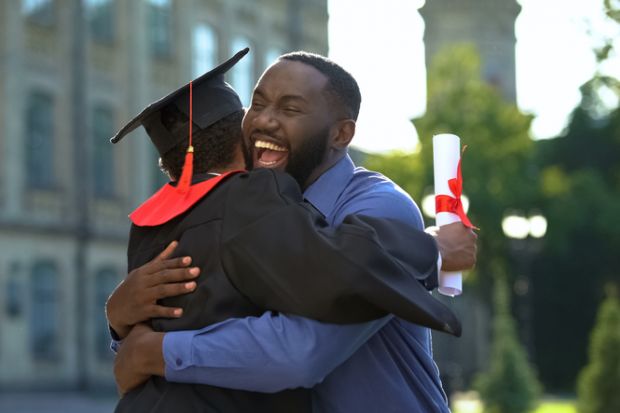Presidential inaugurations are usually moments of huge international attention, but Joe Biden’s words later this week will be watched more intently than ever given recent events in US democracy.
But it is Kamala Harris – the country’s first African American vice-president-elect – who may increasingly take centre stage over the next four years, with the former California senator now holding the casting vote on Biden’s legislation after the Democrats flipped both Senate seats in the Georgia reruns earlier this month.
Harris’ decisive role in US politics – and the expectation that she may again run for the presidency herself in 2024 – will bring unparalleled scrutiny. In the process, it will hopefully draw welcome attention to her alma mater, Howard University in Washington DC – as well as to the US’ other 100 or so historically black colleges and universities (HBCUs), which continue to produce thousands of outstanding graduates each year.
As the president of one of these institutions – Harris-Stowe State University, in Missouri – I hope that the incoming vice-president’s educational journey helps to highlight some of the specific challenges faced by these institutions, whose incredible work with a diverse and often first-generation and low-income student body is, sadly, not reflected in official data.
Take graduation rates, for example. In 2018-19, we graduated a record 196 students, but 84 per cent of these were not counted in our graduation rate, as reported to the federal government via the Integrated Postsecondary Education Data System. Why not? Because official graduation rates only include first-time, full-time freshmen who graduate within 150 per cent of the expected time to complete a degree – in other words, within six years. It takes the full-time freshman cohort and tracks them until they graduate or stop attending their original institution, thereby excluding many college graduates who transferred, studied part-time, or had to step out before restarting their academic careers.
Many graduates have faced unimaginable odds and succeeded in achieving a lifelong dream. Their commitment to higher education is a true testament to the perseverance and pursuit of academic excellence expected of college graduates. But their shining example is missing from the statistics that supposedly evaluate our success rate. Last year, only 29 of our 191 graduates completed within the six-year window, for instance, leading to an apparent graduation rate of 12.2 per cent – way below the actual graduation level of close to 50 per cent once all undergraduates were considered.
This anomaly can have unintended consequences. First, it may give a false impression that a very low percentage of students are succeeding. For example, “Kathy” transferred from her original four-year public institution to attend a university closer to home and successfully earned her degree with a 3.90 GPA within four years, yet she is not counted in either institution’s graduation rate.
Second, the current federal graduation rate calculation benefits highly selective institutions because of the student body they serve and the different missions they pursue in relation to open access. Graduation rates are used in college rankings, which are used by some students and families to make admission decisions, so they matter to institutions. They are also used by some states to allocate limited resources to institutions, so they matter to college boards and administrations, too.
The time has come to recalculate the federal graduation rate to include all college graduates. Kamala Harris’ path from high school to Howard and beyond (she went on to attend the University of California’s Hastings College of the Law) may have been relatively smooth, but she will have seen others whose path to a first degree included stops at many different institutions. That trend is likely to increase further in coming years, as some students will start in early college programmes while still in high school, or go to a community college first and then finish at a four-year institution. Some students will go directly to a four-year institution and then transfer to another four-year institution to complete their degree.
Misleading graduation rates, particularly at minority-serving institutions, are particularly harmful to the perception of low-income and minority students’ success in college. It risks sending the signal to such students that higher education is not for them – or may deter them from attending an institution that is the best fit for them. How many Kamala Harrises, Keisha Lance-Bottoms or Stacey Abramses might we miss if this statistical myopia isn’t corrected?
Corey S. Bradford is president of Harris-Stowe State University, a historically black public university in St Louis, Missouri.
Register to continue
Why register?
- Registration is free and only takes a moment
- Once registered, you can read 3 articles a month
- Sign up for our newsletter
Subscribe
Or subscribe for unlimited access to:
- Unlimited access to news, views, insights & reviews
- Digital editions
- Digital access to THE’s university and college rankings analysis
Already registered or a current subscriber? Login








